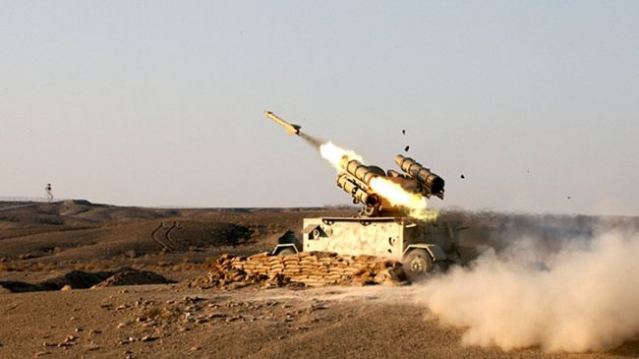| a | |||
Defence & Security News - Iran |
|||
| Monday, February 10, 2014 08:07 AM | |||
| Iran has now 3,600 air defense sites through a network to protect all the air space of the country. | |||
Commander
of Iran’s Khatam ol-Anbia Air Defense Base Brigadier General Farzad
Esmayeeli said the air defense unit is protecting the country's sky through
a network of nerve endings which have stretched to 3,600 important and
strategic sites now. Before the Islamic Revolution the air defense could
cover 100 points and the number increased to 700 after the Iraqi-imposed
war started against Iran (1980-1988), Esmayeeli told FNA on Sunday, February
9, 2014. |
|||
| |
|||
 Iranian-made Shahab Thaqeb or Tagheb air defense weapon system was tested during four-day Tharallah exercises near the strategic Persian Gulf region in February 2012. |
|||
After the war and the seperation of the air defense unit from the Army’s Air Force, the number “increased to 3,600 places”, he added, explaining how the network of Iran's integrated defense system protects the entire country through these nerve endings and the connections among them. Esmayeeli also referred
to Iran’s five-year plans to develop its air defense system under
a plan dubbed ‘Velayat 1’ which specifies the number of
forces, their places and the quality of their deployment as well as
the quality of their strategy, agility and mobility in any defensive
priority, and said the country plans to implement Velayat 2, 3 ,…
plans in the future. General Esmayeeli had announced in early September that Iran is mulling plans to develop its air defense systems based on the possible threats which might be posed to the country in the next five years. "Today, the air defense is moving forward concurrently with new threats and what is going on around us shows that we should make the air defense ready to confront the threats not only of the present time but of the next five years," Esmayeeli said in a ceremony in Tehran at the time. He downplayed the effects of the western sanctions on the progress of Iran's defense industry, and announced that Iran's air defense is implementing 15 operational projects now. Speaking during a visit to the country's Southwestern Air Defense Zone at the time, he pointed to Iran's eye-catching growth in air defense systems in recent years, and stated that Iran's air defense capability is so advanced that it is not comparable to what it could do during the Iraqi imposed war on Iran in 1980s. "At present, the air defense unit's capability, capacity and expertise can defuse any threat existing in the region," Esmayeeli stressed, adding that the air defense forces enjoy a "desirable" level of preparedness. The Iranian Armed Forces have recently test-fired different types of newly-developed missiles and torpedoes and tested a large number of home-made weapons, tools and equipment, including submarines, military ships, artillery, choppers, aircrafts, UAVs and air defense and electronic systems, during massive military drills. |
|||
Iran has now 3,600 air defense sites through network to protect all air space of the country 1002141
- Posted On















